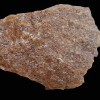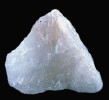

Tennessee Lithic Material
| Name | Natural | Non-heat treated points | Heat treated points | Color details | Primary found in: | Associated Formation / Member |
| Argillite |
 |
 |
Light to dark green, but may range to various shades of gray. | Tennessee | ||
|
Armuchee Chert AKA: Horse Leg Chert, Frog Mountain Chert |
 |
 |
 |
Black to dark or medium gray | South central Tennessee | Frog Mountain formation |
| Banded Slate |
 |
  |
Tennessee | |||
| Bangor Chert |
 |
  |
 |
Translucent and banded, ranging in color from black to a dark bluish gray or greenish | Southern Tennessee | Bangor Limestone formation |
|
Bangor Limestone AKA: Colbert County Limestone |
 |
 |
Medium gray | Southern Tennessee | Bangor Limestone formation | |
|
Bigby-Cannon Chert AKA: Gray Banded Chert |
 |
 |
 |
Banded gray and white. It has broad alternating bands of light to dark whites and grays followed by darker grays to almost black | Western Tennessee | Bigby and Cannon Limestone formations |
| Blue Gray Fort Payne Chert |
 |
 |
Opaque gray to bluish gray, or black with tan patches. White fossil specks are usually present | Western Tennessee | Fort Payne formation | |
|
Brassfield Chert AKA: Clifton Chert / Agate, Belfast Chert |
 |
 |
  |
Artifacts tend to range in color from light greenish to blue or light tans mottled with yellowish red to milky white | Western to central Tennessee | Brassfield Formation |
| Bucksnort Chert |
 |
 |
 |
Western Tennessee | ||
| Buffalo River Chert |
 |
  .jpg) |
 |
Ranges in color from light to dark tans with orangish, reddish and bluish hues. May have gray or brownish swirls | Southwestern Tennessee | Fort Payne Formation |
| Burlington Chert |
 |
|
  |
Varies from white to gray or tan. Banding and mottling may be present. | Western Tennessee | Burlington Formation |
|
Calfkiller Agate AKA: Calf Killer Agate |
 |
 |
Mottled with colors of red, yellow, and white | Tennessee | ||
| Camden Chert |
 |
|
|
Mottled white to gray, gray to gray blue, pale yellow to olive-yellow or tan. Vugs, quarts inclusions, streaking generally present | Western Tennessee | Tuscaloosa Formation |
| Carter's Chert |
 |
 |
Ranges in color from a white to gray with a gray brown mottling or darker gray banding and white speckles. | Central Tennessee | ||
|
Chepultepec Chert
Knox Chert Variant |
 |
 |
 |
Ranges from yellow to white and oolitic | Eastern Tennessee | Knox formation |
| Chickamauga Chert |
 |
 |
 |
Ranges from a brownish black to a black in bedded limestone, but ranges to a drab olive green in limestone boulders. | Southeastern Tennessee | Chickamauga Limestone Formation |
| Chilhowee Mudstone |
 |
 |
greenish-gray in color | Eastern Tennessee | ||
| Clear Creek Chert |
 |
 |
 |
Ranges from a slight yellowing gray to white | Northwestern Tennessee | Overlies the Backbone Limestone formation |
| Conococheague Chert |
 |
 |
 |
Ranges from a gray to a bluish gray, brownish gray, or black. Small blue to white inclusions may be present. | Eastern Tennessee | Conococheague Limestone Formation |
|
Copper Ridge Chert Knox Chert variant |
 |
 |
 |
Ranges in color from medium to dark gray to black | Eastern Tennessee | Knox formation between Nolichucky Shale and Chepultepec limestone |
|
Crab Orchard Banded
Chert AKA: Gray Banded, Jelly Roll, Kentucky Stromatoporoid chert |
 |
   |
 |
Banded gray and white. It has broad alternating bands of light to dark whites and grays followed by darker grays to almost black | Northwestern to north central Tennessee | Crab Orchard member |
| Crystal Quartz |
 |
  |
clear colorless stone similar to clear glass | Tennessee | ||
| Decaturville Chert |
 |
 |
Porous gray | Western Tennessee | Decaturville Formation of the Helderbergian Group | |
|
Del Rio Chert AKA: Bayless Chert |
 |
 |
  |
Mottled ranging in colors from yellow to reds, dark blues to black, browns and whites | Western Tennessee | |
| Dongola Chert |
 |
|
 |
Dark tan to dark brown with banding of dark brown | Northwestern Tennessee | St. Louis formation |
|
Dover Chert Fort Payne variant AKA: Elco Chert |
 |
  |
Range from a light tan to almost a black chocolate brown with swirls, bands, or streaks of light to dark | Northwestern to north central Tennessee | Fort Payne Formation | |
|
Erwin Quartzite AKA: Erwin - Antietam Quartzite |
 |
   |
Ranges from bright white to light gray, tan, brown, pink, or red. A green brown variation is reported in Amherst County, Virginia | Tennessee, North Carolina, Virginia, South Carolina | Erwin Formation | |
| Florence County Fort Payne Chert |
 |
 |
 |
Ranges in color from dark gray to black and is mottled with lighter translucent light blue | Southwestern Tennessee | Fort Payne formation |
| Fort Payne Chert |
.jpg) |
 |
Ranges in color from black to a grayish blue, or white to a bluish white. Bluish gray is the predominate color with bluish hues | Tennessee | Fort Payne formation | |
| Harbert Hills Chert |
 |
|
 |
Tennessee | ||
| Hardy Creek Chert |
 |
 |
 |
Ranges from a brown to a gray or an olive black | Northeastern Tennessee | Hardy Creek Limestone Formation |
|
Harriman Chert / Novaculite AKA: Cypress Creek Chert |
 |
 |
 |
Shades of white to light yellow | Northwestern Tennessee | Harriman formation |
|
Honaker Chert / Dolomite AKA: Nolichucky Chert |
 |
 |
 |
Dolomite is a light to medium gray with banding present, minor chert nodules of dark gray to black with algal banding | Virginia, Tennessee, North Carolina | Honaker Formation / Nolichucky Formation |
|
Horse Creek Chert Tuscaloosa variation AKA: Pickwick Chert and Lost Quarry Chert |
 |
   |
   |
Banded with the band colors ranging from black to medium gray (outer band), yellow tan to pale yellow (next band), pink to reddish or brick red (center). | Southwestern to south central Tennessee | Tuscaloosa Formation |
| Horse Mountain Agate |
 |
 |
Variegated chalcedony with colors of white, amber, red, and black. | South central Tennessee | Hermitage Formation | |
| Kingsport Chert |
 |
 |
 |
Ranges from a medium to dark gray | Tennessee, North Carolina, Virginia | Kingsport Formation of the Beekmantown Group |
| Knox Chert |
 |
  |
Ranges from a dark blue to bluish gray with translucent mottling, rarely a reddish color with slight mottling | Eastern Tennessee | Knox formation | |
| Lafayette Gravel Chert |
 |
 |
 |
Most commonly ranges from brown to tan, greyish tan, yellowish tan, or cream, less common white and black occur. Mottling or rarely banded | Missouri, Illinois, Arkansas, Louisiana, Mississippi | Lafayette Gravel Formation |
| Lafayette Quartzite |
 |
 |
Missouri, Illinois, Arkansas, Louisiana, Mississippi, Tennessee | Lafayette Gravel Formation | ||
| Lenoir Chert |
 |
 |
 |
Dark Gray | Tennessee, Virginia, West Virginia, Kentucky, South Carolina, Georgia, Alabama | Lenoir Limestone Formation |
|
Longview Chert Knox variation |
 |
 |
 |
Primarily reddish, but white to gray colors do occur | Eastern Tennessee | Knox formation |
| Macot Dolomite / Chert |
 |
 |
 |
Ranges from white to a light to medium gray with with mottling or streaking ranging from pink to red or green | Eastern Tennessee | Mascot Dolomite Formation of the Newala Group |
| Monteagle Chert |
 |
 |
 |
Medium gray | North central Tennessee | Monteagle Limestone formation |
|
Mustard Chert (Fort Payne variant) |
 |
 |
 |
Ranges from a tannish yellow and olive color to a bluish black and commonly has strings of bryozoan fossils forming a "string of beads". | Southeastern Tennessee | Ft Payne Formation |
| Newman Chert |
 |
 |
 |
Ranges in color from yellow to tan, red, and orange | Northeastern Tennessee | Newman Limestone formation |
| Orthoquartzite |
 |
 |
Varies | Tennessee | ||
| Poteet Chert |
 |
 |
 |
Ranges from a dark olive gray to olive black. | Northeastern Tennessee | Poteet Limestone Formation |
| Pyburn Chert | Western Tennessee | Pyburn Limestone Member of the Olive Hill Formation | ||||
| Quartz |
 |
  |
Milky white with thin veins |
Tennessee | ||
| Quartzite |
 |
   |
Varies from white to gray, or pink and tan in color | Tennessee | ||
| Rhyolite |
 |
  |
Gray to grayish black, flow banding may be present alternating from light to darker gray | Tennessee | ||
| Shady Chert |
 |
 |
 |
Ranges from a bluish gray to a yellowish gray blue, or white with mottling commonly present. | Alabama, Georgia, Tennessee, North Carolina, Virginia | Shady Dolomite Formation |
|
Sonora Flint AKA for Wyandotte Chert |
 |
  |
Vibrant colorful flint that may range from tans to light gray-blue and dark brown to purples | North central to central Tennessee | Ste. Genevieve Limestone formation | |
| Ste. Genevieve Chert |
 |
 |
 |
Ranges from light to medium blue, gray, and black, to olive gray and yellowish gray with gray concentric bands commonly present | Illinois, Indiana, Missouri, Kentucky | Ste. Genevieve Limestone formation |
|
St. Louis Green
Chert AKA: St. Louis Formation Chert |
 |
|
|
Varying shades from light gray green to yellow green | Western Tennessee | St. Louis formation |
|
Tuscaloosa Chert AKA: Red / Yellow Jasper |
 |
  |
 |
Ranges in color from white, tan, yellowish tan to yellow or brown, and red | Southwestern to south central Tennessee | Tuscaloosa Formation |
| Tupelo Fort Payne Chert |
 |
 |
 |
Light beige to light tan with light gray mottling and may have banding. It has a creamy appearance | South central Tennessee | Fort Payne formation |
| Unakite |
 |
 |
Mottled green and pink | Tennessee | ||
| Warsaw Chert |
 |
 |
 |
Southeastern Tennessee | Warsaw Limestone formation | |
|
Wayne County Chert AKA: Kentucky Blue and White Chert |
 |
  |
 |
Off white to light tan with white and blue | North central Tennessee | |
|
Wyandotte Chert AKA: Indiana Hornstone, Harrison County Chert |
 |
  |
Ranges in color from a medium bluefish gray to a medium light gray. Banding is common and is various shades of gray | Western Tennessee | Fredonia Member of the Ste. Genevieve Limestone formation |